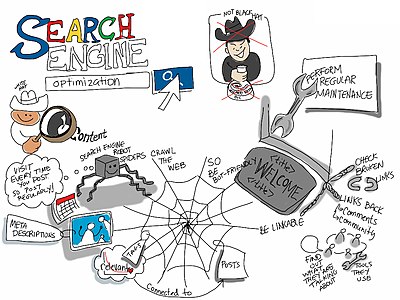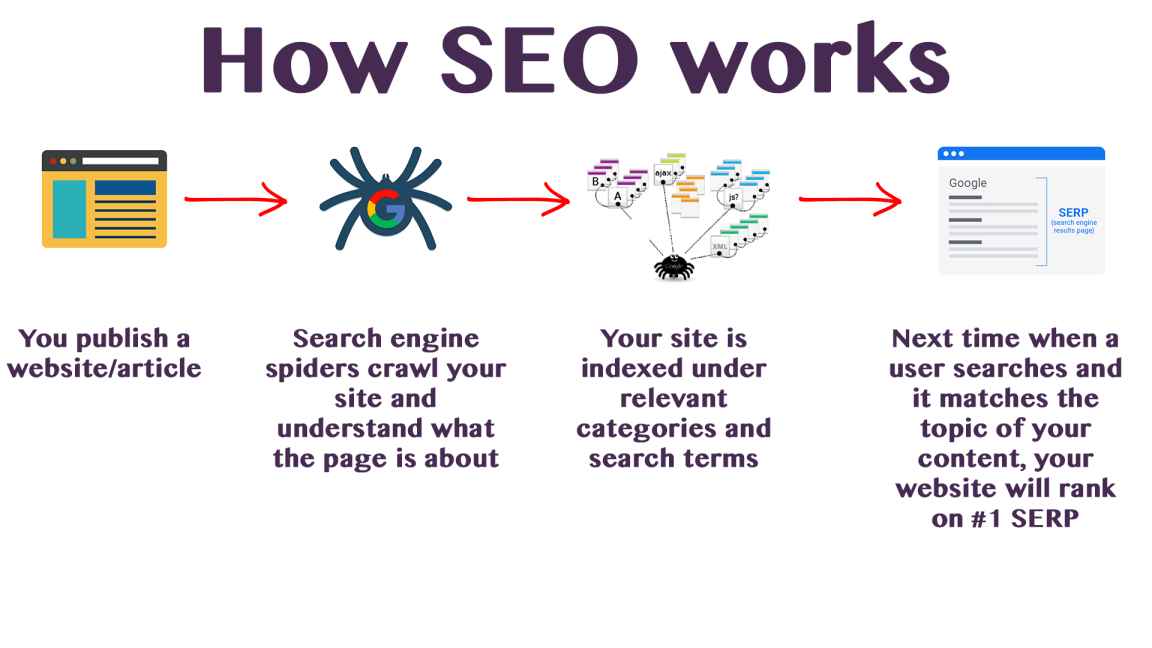
Search Engine Optimization
SEO means search engine optimization. Let’s look at that in the context of your website.
(SEO) is the process of improving the quality and quantity of website traffic to a website or web page from search engines. SEO targets non-paid traffic (known as “natural” or “organic” results) rather than direct traffic or paid traffic. Unpaid traffic can originate from different types of searches, including image search, video search, academic search, news search, and industry-specific vertical search engines.

As an Internet marketing strategy, SEO considers how search engines work, the computer-programmed algorithms that dictate search engine behavior, what people search for, and the actual search terms or keywords typed into the engines. search and which search engines are preferred by your target audience. SEO is done because a website will receive more visitors from a search engine when websites rank higher on the search engine results page (SERP). These visitors can potentially become customers.
Type of SEO:
Google and other search engines take several factors into account when ranking content, and as such, SEO has many facets. The three main types of SEO are on-page, off-page, and technical SEO:
- On-page SEO: Optimization of the quality and structure of the content of a page. Content quality, keywords, and HTML tags are the key players for on-page SEO.
- Off-Page SEO: Getting other sites and other pages on your site to link to the page you are trying to optimize. Backlinks, internal links, and reputation are your off-page MVPs.
- Technical SEO: Improve your site’s overall performance in search engines. Site security (SSL certificates), UX, and structure are key here.

Sub-types of SEO:
- Local SEO: Getting your business ranked as high as possible on Google Maps and in local SERP results. Reviews, listings, and Google Business profile optimization are the most important things here.
- Image SEO: A combination of technical and on-page strategies to get images on your website pages to rank in Google Image Search.
- Video SEO: A combination of on-page, technical, and off-page strategies to get your videos ranked in YouTube or Google video results.
Benefits & importance of SEO:
When used strategically, search engine optimization (SEO) can provide businesses with many benefits, including increased web traffic and more qualified leads coming through the sales funnel. In essence, SEO has the potential to bring more organic attention to your business, meaning it doesn’t cost you anything.
- More Website Traffic: When your site is optimized for search engines, you receive more traffic, which equals increased brand awareness as well as…
- More Customers: To optimize your site, you need to target keywords (the terms your ideal customers/visitors search for), which means you’ll get more relevant traffic.
- Better Reputation: A higher ranking on Google creates instant credibility for your business. If Google trusts you, then people trust you.
- Higher ROI: You invest money in your website and the marketing campaigns that lead to your website pages. A high-performing site enhances the fruits of those campaigns, making your investment worthwhile.
How Does SEO Work?
- Create a List of Keywords.
- Analyze Google’s First Page.
- Create Something Different or Better.
- Add a Hook.
- Optimize For On-Page SEO.
- Optimize For Search Intent.
- Focus on Content Design.
- Build Links to Your Page.
Google’s search crawlers constantly scan the web, collecting, categorizing, and storing billions of web pages that exist in its index. When you search for something and Google gets results, it gets them from its index, not from the website itself.

Google uses a complex formula (called an algorithm) to sort results based on a series of criteria (ranking factors, which we’ll look at next), including the quality of the content, its relevance to the search query, the website (domain) belongs, and more.
The way people interact with results tells Google what needs each page meets (or doesn’t), which is also taken into account in the algorithm.
References:
https://en.wikipedia.org/wiki/Search_engine_optimization
https://www.wordstream.com/seo#:~:text=Search%20engine%20optimization%
Leave a Reply